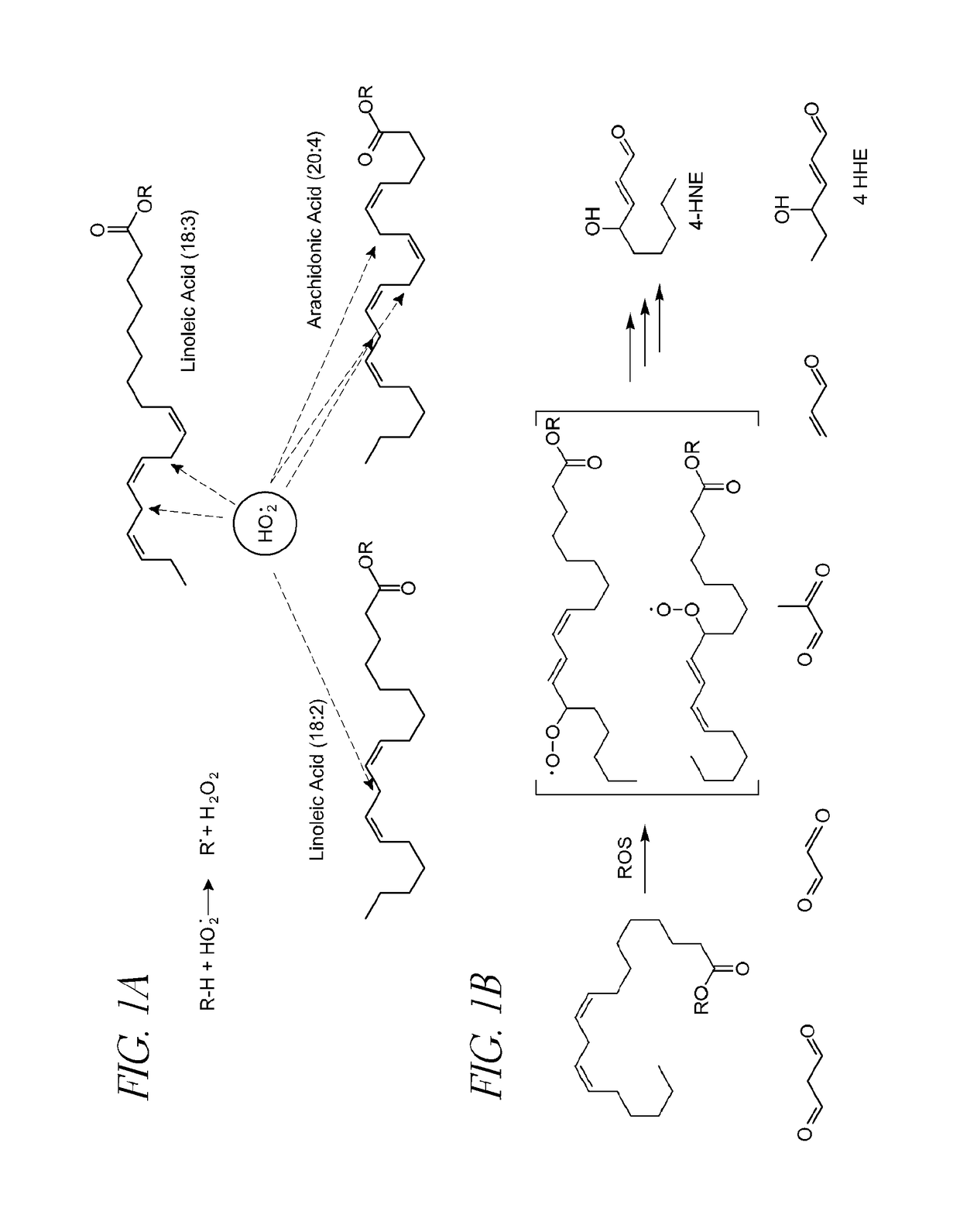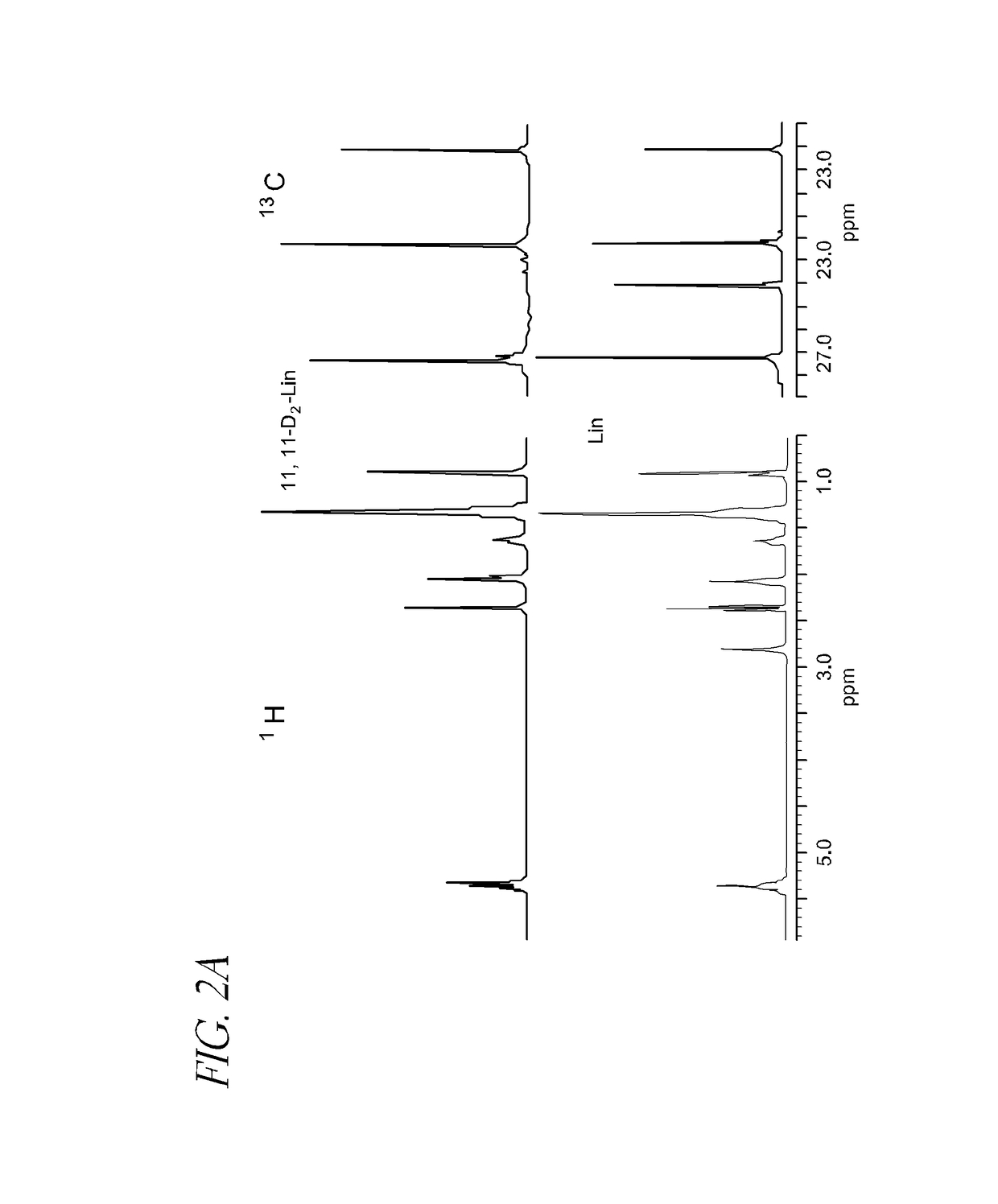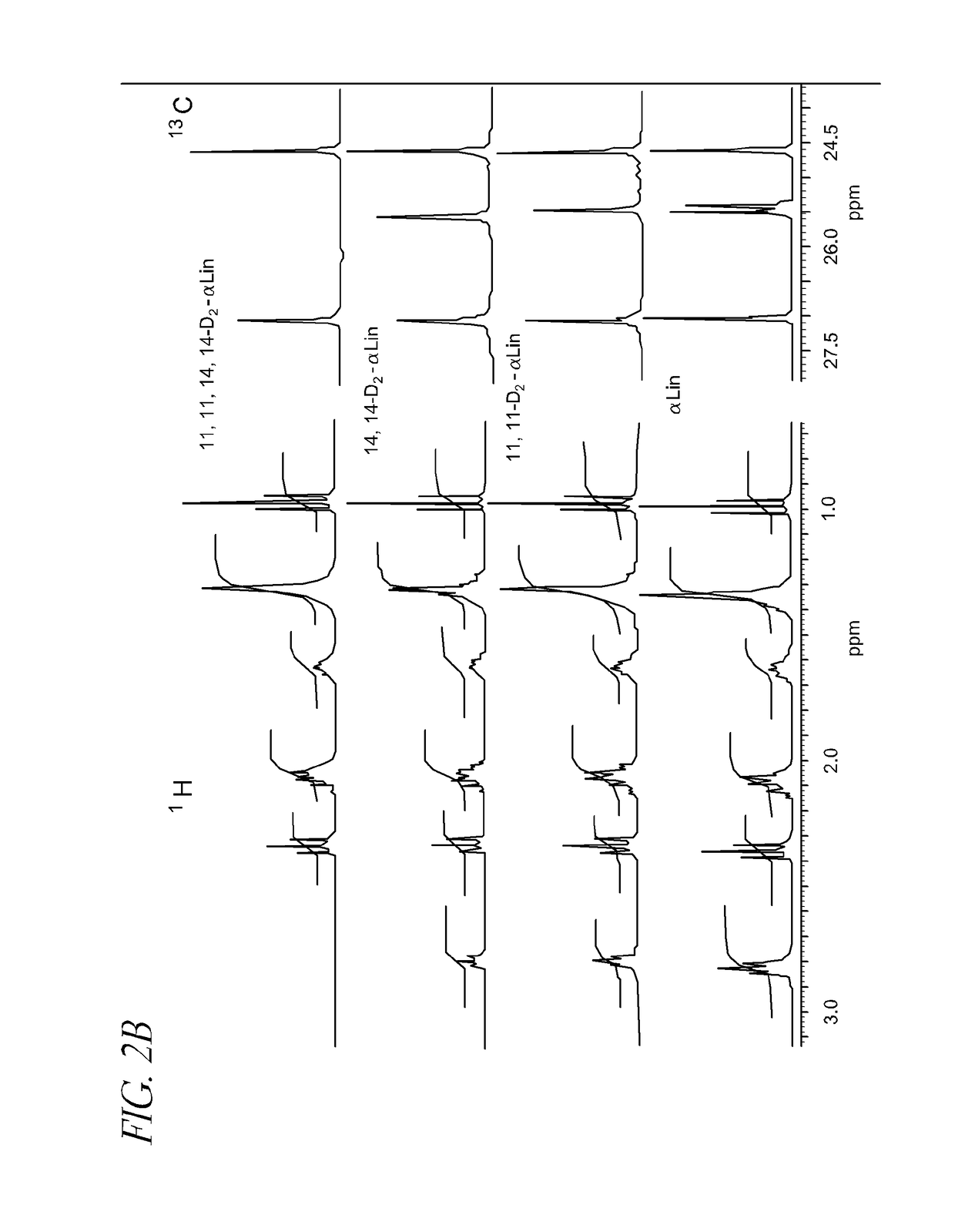Neurodegenerative disorders and muscle diseases implicating PUFAs
a technology applied in the field of neurodegenerative disorders and muscle diseases implicating pufas, can solve the problems of oxidative damage to cellular structures and machinery, several detrimental changes, and negatively affecting the fluidity and permeability of their membranes
- Summary
- Abstract
- Description
- Claims
- Application Information
AI Technical Summary
Benefits of technology
Problems solved by technology
Method used
Image
Examples
example 1
of 11,11-D2-linoleic acid
[0206]
1,1-Dideutero-oct-2-yn-1-ol (2)
[0207]To a solution of ethylmagnesium bromide prepared from bromoethane (100 ml), 1,2-dibromoethane (1 ml) and magnesium turnings (31.2 g) in dry THF (800 ml), heptyn-1 ((1); 170 ml) was added dropwise over 30-60 min under argon. The reaction mixture was stirred for 1 h, and then deuteroparaform (30 g) was carefully added in one portion. The reaction mixture was gently refluxed for 2 h, chilled to −10° C., and then 5-7 ml of water was slowly added. The mixture was poured into 0.5 kg slurry of crushed ice and 40 ml concentrated sulphuric acid and washed with 0.5 L of hexane. The organic phase was separated, and the remaining aqueous phase was extracted with 5:1 hexane:ethyl acetate (3×300 ml). The combined organic fraction was washed with sat. NaCl (1×50 ml), sat. NaHCO3, (1×50 ml), and dried over Na2SO4. The solvent was evaporated in vacuo to yield 119.3 g (99%) of colourless oil which was used without further purificatio...
example 2
of 11,11,14,14-D4-linolenic acid
[0212]
1,1-Dideutero-pent-2-yn-1-ol (9)
[0213]But-1-yne (8) was slowly bubbled through a solution of ethylmagnesium bromide prepared from bromoethane (100 ml) and magnesium turnings (31.3 g) in dry THF (800 ml) on a bath (−5° C.). Every now and then the bubbling was stopped and the cylinder with but-1-yne was weighed to measure the rate of consumption. The supply of alkyne was stopped shortly after a voluminous precipitate formed (the measured mass of alkyne consumed was 125 g). The reaction mixture was warmed up to r.t. over 30 min, and then stirred for 15 min. The mixture was then heated up to 30° C., at which point the precipitate dissolved, and then stirred at r.t. for another 30 min. Deuteroparaform (28 g) was added in one portion and the mixture was refluxed for 3 h, forming a clear solution. It was cooled down to r.t. and poured into a mixture of crushed ice (800 g) and 50 ml conc. H2SO4. Hexane (400 ml) was added and the organic layer was separa...
example 3
of 14,14-D2-linolenic acid
[0220]
4,4-Dideutero-octa-2,5-diyn-1-ol (19)
[0221]To a solution of ethylmagnesium bromide, prepared from ethyl bromide (9.2 ml, 123.4 mmol) and magnesium turnings (2.74 g, 112.8 mmol) in 40 ml of dry THF, on an ice bath with stirring, propargyl alcohol (3.16 g, 56.4 mmol) in THF (5 ml) was added dropwise over 10-15 min. The reaction mixture was allowed to warm up to r.t. and stirred for another 2 h, with occasional warming to 40° C. To thus generated dianion, 0.13 g of CuCl was added, followed by slow (over 15 min) addition of bromide (10) (6.9 g) in THF (20 ml). The reaction mixture was then stirred for 1 h at r.t. and then refluxed for 5 h. The reaction mixture was then refluxed for 5 h, cooled slightly (a precipitate will form if cooling is too fast), and poured into a slurry of crushed ice and 2.5 ml concentrated H2SO4. The mixture was washed with hexane (600 ml). The organic fraction was separated, and the aqueous fraction was additionally extracted wit...
PUM
| Property | Measurement | Unit |
|---|---|---|
| pH | aaaaa | aaaaa |
| pH | aaaaa | aaaaa |
| OD | aaaaa | aaaaa |
Abstract
Description
Claims
Application Information
 Login to View More
Login to View More - R&D
- Intellectual Property
- Life Sciences
- Materials
- Tech Scout
- Unparalleled Data Quality
- Higher Quality Content
- 60% Fewer Hallucinations
Browse by: Latest US Patents, China's latest patents, Technical Efficacy Thesaurus, Application Domain, Technology Topic, Popular Technical Reports.
© 2025 PatSnap. All rights reserved.Legal|Privacy policy|Modern Slavery Act Transparency Statement|Sitemap|About US| Contact US: help@patsnap.com



